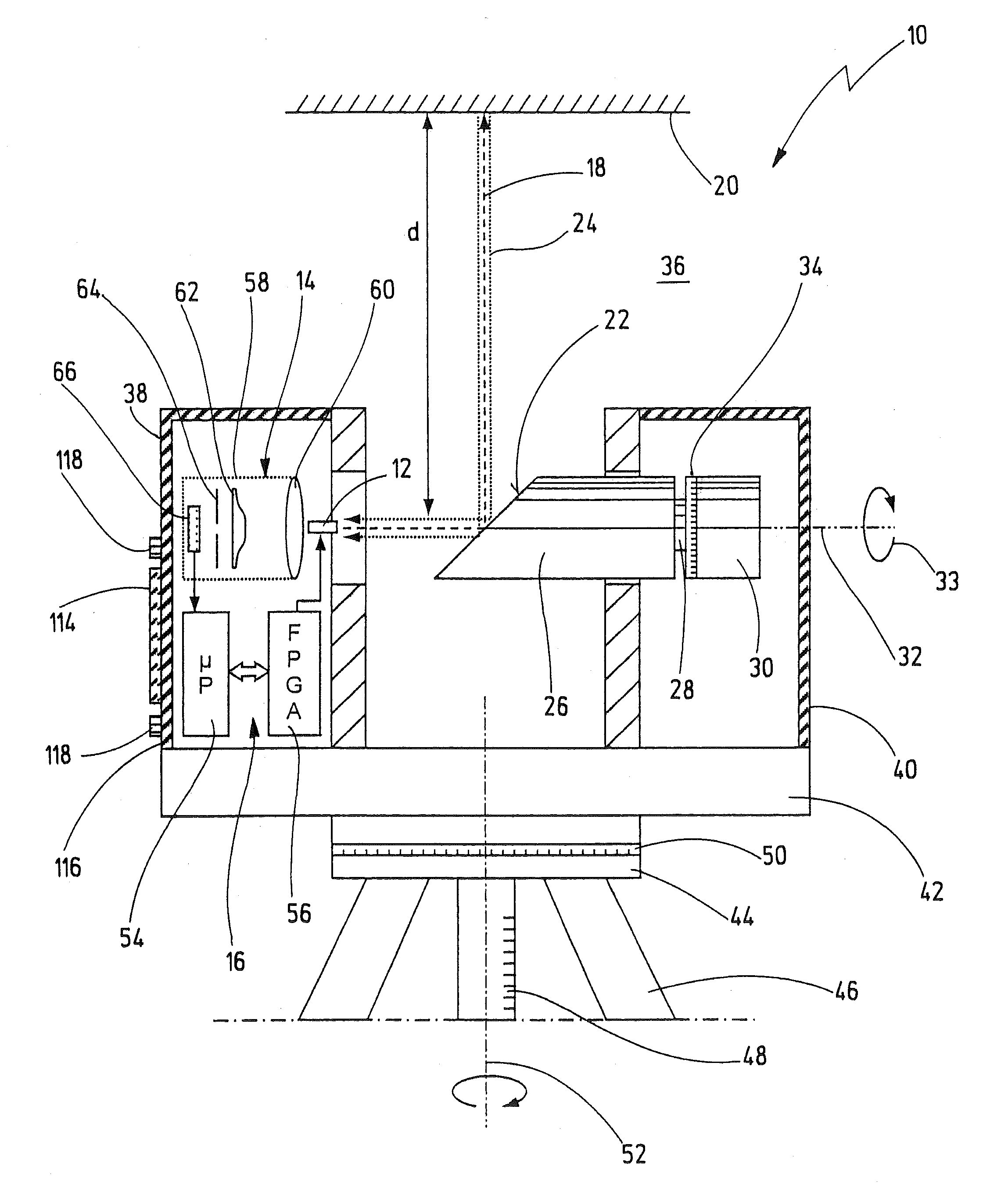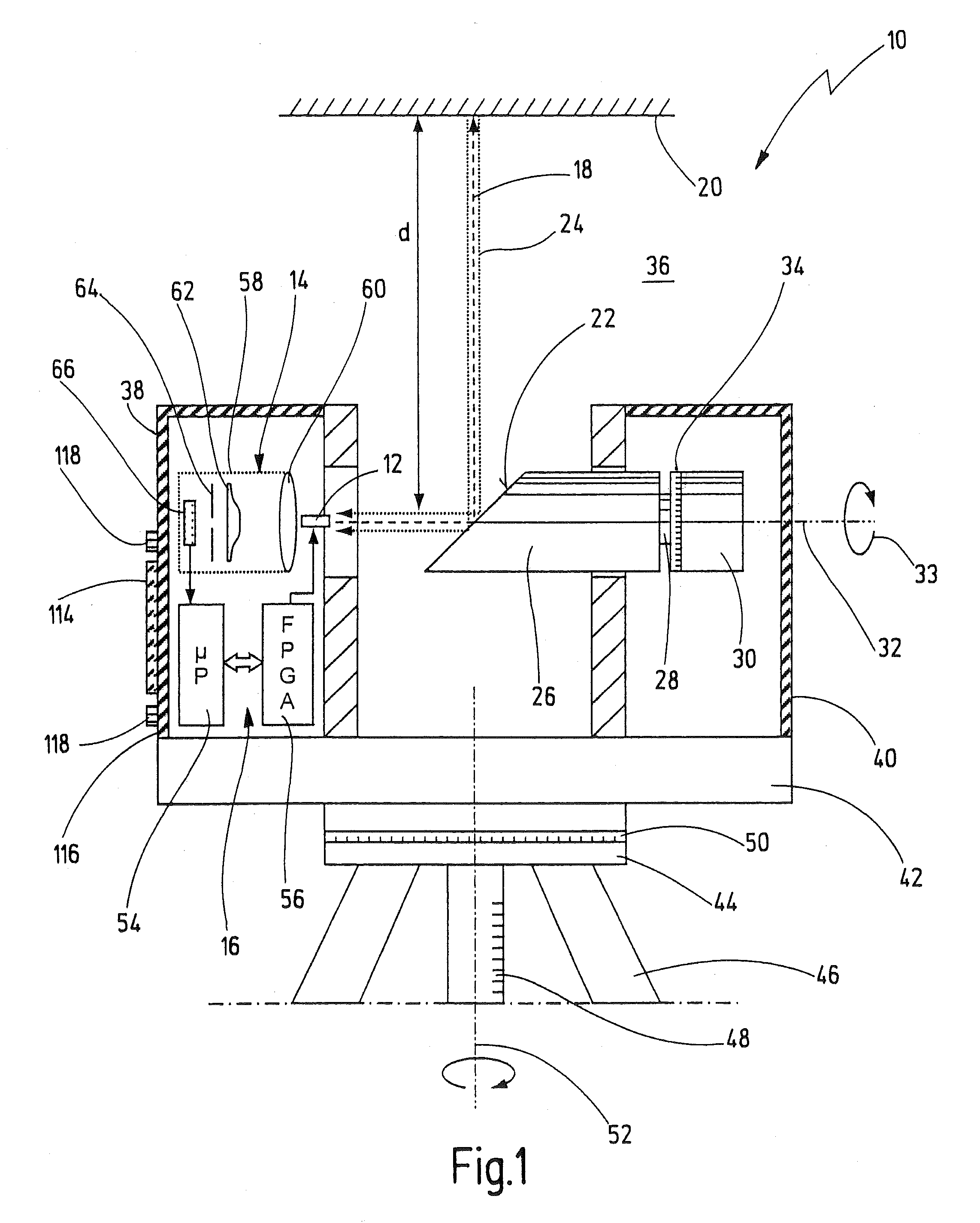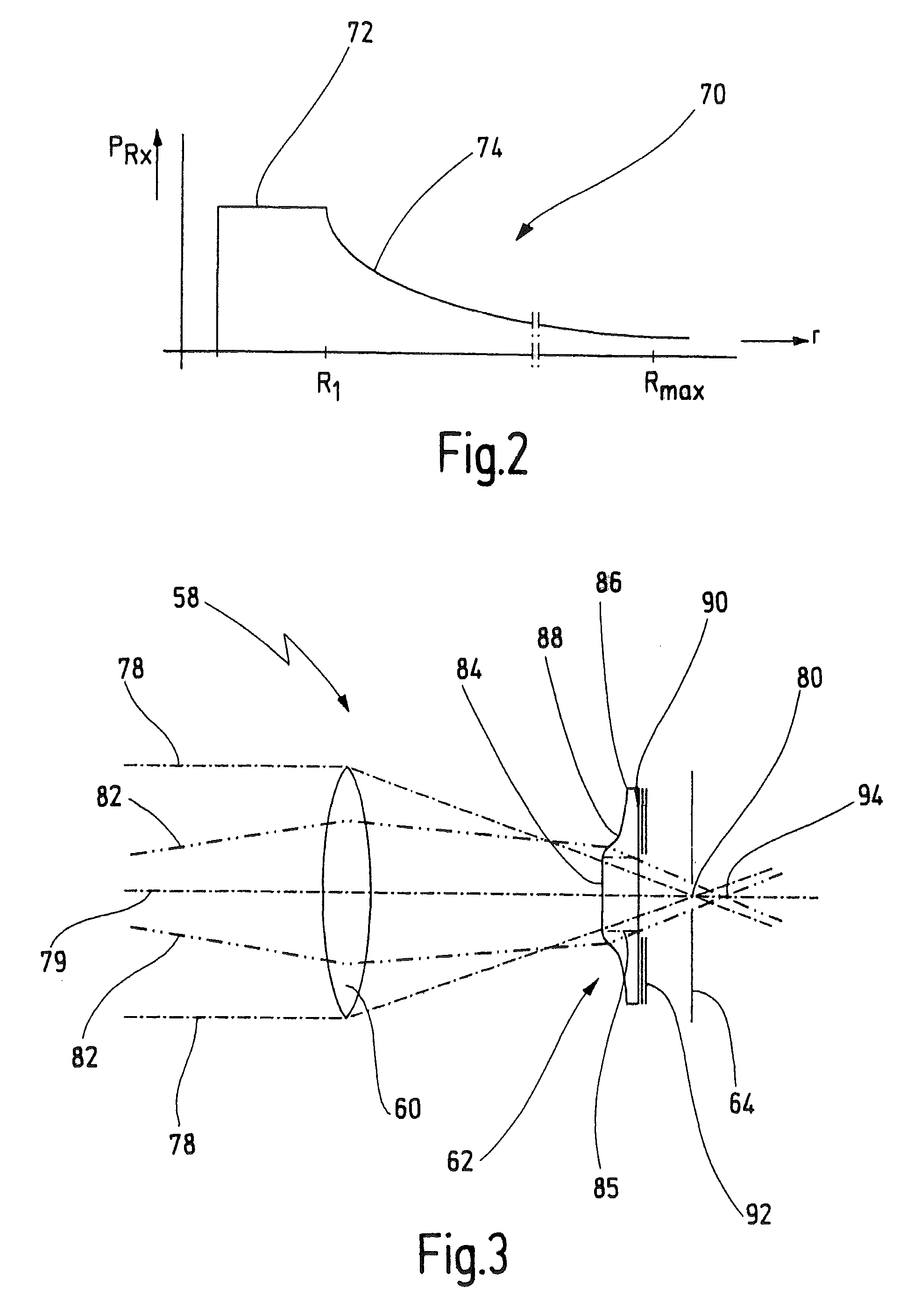Method and device for determining a distance from an object
a distance measurement and distance technology, applied in distance measurement, height/levelling measurement, instruments, etc., can solve the problems of destroying the light receiver, unable to reliably determine the distance at an excessively high reception signal power, and unable to distinguish the reception signal from unavoidable interference, etc., to achieve the effect of optimizing the measuring range and extending the measuring rang
- Summary
- Abstract
- Description
- Claims
- Application Information
AI Technical Summary
Benefits of technology
Problems solved by technology
Method used
Image
Examples
Embodiment Construction
[0049]In FIG. 1, a laser scanner is designated in its entirety by the reference numeral 10. The laser scanner 10 is one possible embodiment of a device according to the present invention. However, the novel device can also be a simple distance measuring device which measures one-dimensionally and which determines the distance from an object with the aid of a emission light beam and a reception light beam. The invention is also not restricted to the use of light beams in the narrower sense (wavelengths between 300 and 1000 nm), but rather can in principle also be realized with electromagnetic waves from a different wavelength range as long as a quasi-optical propagation is present. The expression light beam as used here therefore encompasses such electromagnetic waves as well.
[0050]The laser scanner 10 comprises a light emitter 12 and a light receiver 14, which are connected to an evaluation and control unit 16. In the preferred exemplary embodiment, the light emitter 12 comprises a ...
PUM
 Login to View More
Login to View More Abstract
Description
Claims
Application Information
 Login to View More
Login to View More - R&D
- Intellectual Property
- Life Sciences
- Materials
- Tech Scout
- Unparalleled Data Quality
- Higher Quality Content
- 60% Fewer Hallucinations
Browse by: Latest US Patents, China's latest patents, Technical Efficacy Thesaurus, Application Domain, Technology Topic, Popular Technical Reports.
© 2025 PatSnap. All rights reserved.Legal|Privacy policy|Modern Slavery Act Transparency Statement|Sitemap|About US| Contact US: help@patsnap.com



